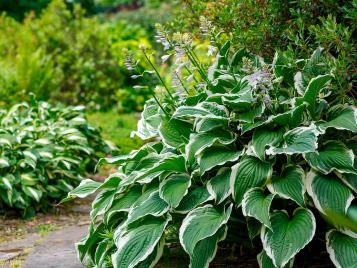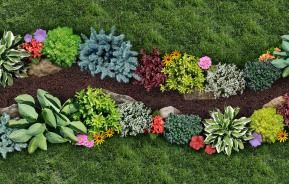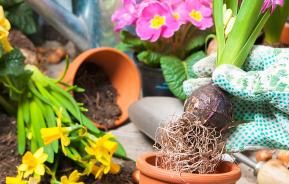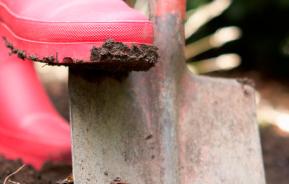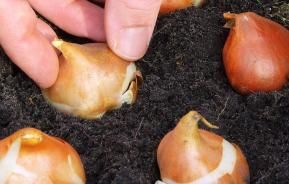Some people believe that the word herbaceous means that plants die down to the ground level in autumn, coming back in spring. While many perennials do this, there are also lots of evergreens to choose from – and, of course, being perennial, they will go on flowering for many years.
How to plant perennials
Choosing plants that enjoy the conditions in your garden is the first step, but investing some care and attention at planting time and during establishment will ensure better performance for many years.
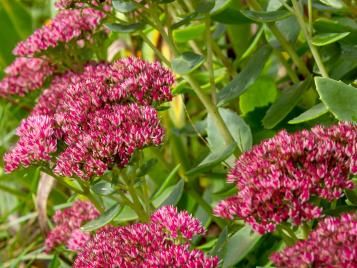
Although spring and autumn are regarded as the best times to plant, container-grown perennials can be planted all year round - just keep them well watered during dry weather.
- Make sure the soil has been prepared well with lots of planting compost and all perennial weeds have been removed.
- Ensure that the soil is loose enough to allow the roots to grow out.
- Soak the plants with water before planting.
- If necessary, if pot-grown plants look potbound, gently tease out some roots from the rootball.
- Plant with a trowel, firm the soil around the plants by hand and water in thoroughly.
- In large borders, it pays to plant herbaceous perennials in groups of three or five for best effect.
Routine maintenance
Herbaceous perennials provide attractive foliage and flowers and with the faded flowers, form and structure in winter. The other great thing about herbaceous perennials is that they need minimal maintenance if you’ve chosen the right plants for your conditions and planted them well. But some simple routine maintenance will ensure better performance and a more attractive display.
Apply mulch in spring, which will help prevent weed problems and maintain soil moisture levels, especially important with those plants that prefer a cool, moist root run, such as hostas and hellebores.
Some taller perennials, such as delphiniums and lupins, and those with heavy flower heads, such as peonies, usually need staking, especially in exposed areas. Supports should be put in place in spring so that they soon become hidden by the foliage. Also, putting them in place later is more difficult and some damage may already have occurred.
Young spring growth is vulnerable to slugs and snails, so take action early in spring before damage occurs. Hostas, for example, are often attacked while the new shoots are still below ground level and as they unfurl.
Keep weeds under control - not only do they look unsightly, but also compete for space, light, food and water.
Keep young plants well-watered and established plants may need watering during prolonged dry periods. Giving the plants a good feed with a continuous release feed in spring will improve growth and flowering.
Deadheading faded flowers keeps plants tidy and can lead to further flushes of flowers later in the year. In autumn, cut back dead and dying foliage and flower stems, unless you want them for winter effects, such as the flower heads of sedums or ornamental grasses. In cold areas and with not totally hardy plants, cutting back is best left until spring, as the top growth provides some protection against the cold.




